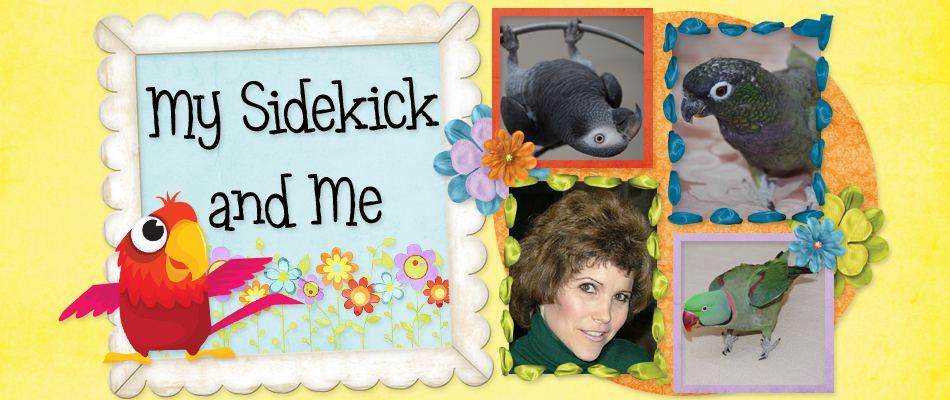
That’s right, I’m a parront. I have three beautifully feathered, well mannered (most of the time), intelligent fids.
You may be asking yourself, what exactly are fids? Well, fids, quite simply, are kids in every sense of the word, they just happen to have feathers. They play, they bicker, they laugh (really, they do), they talk, they’re sensitive, they’re not fancy to cleaning up their room, and they LOVE when their parront is silly. The sillier the better. They also never grow up. Fids will always remain fids.
My oldest is Chester, an Alexandrine ringneck parakeet. It’s hard to believe I’ve had him about 16 years. He’s stunning to look at. Measuring in at about 25 inches, about half of his length is his tail. His light green feathers are almost velvety, and his oversized, vivid red beak always looks to me like it’s bearing a smile. Chester is one of the happiest, carefree fids I’ve ever met; but, when I have a down day, he somehow instinctively wants to be close.
Dreyfuss, a maximillian pionus, is my middle fid. At around 15, she and Chester grew up as siblings. And, just like siblings, they may squabble one minute and want to be close the next. Dreyfuss is shy around strangers but not like she was thanks to strangers (to her) learning to respond to her body language. She also loves her head rubs and is one of the few living beings that actually likes when I sing to her. Sometimes she’ll raise her head and sing right along with me.
My youngest is Barnaby, an eight plus old Timneh African Grey, who LOVES his cream cheese, and his kisses. His very first words were “I love you.” Barnaby came to me on a Delta jet and I always think about him when I’m at the airport. His breeders are Nannyroo and Rooster, given their nicknames because Nannyroo – otherwise known as Eva – from infancy carried the babies around in pockets of her apron. It’s one of the ways they socialized their babies. (Due to health issues, she’s not hand raising them any longer.)
In my opinion, having fids is very much like having kids. Granted, I’ve never had children but I have a niece.
If Dreyfuss should wander on Chester’s cage, he’ll usually find mom to be rescued. (Barnaby, however, will fly to his play cage instead. Then call out ‘Mommy here!) They love attention, and know exactly how to get it. Unlike kids, however, I don’t read them stories before putting them to bed. I do however, need to plan ahead. Barnaby would much rather stay up and talk about his day than sleep.
On a serious note, adopting birds isn’t a decision anyone should take carelessly – never should it be a whim decision. I have heard one too many sad stories of birds who have lost homes because of chronic and destructive behaviors brought about by owners who simply weren’t fully prepared for the complexities of owning a parrot.
In addition to needing healthy foods, plenty of toys, and a non-toxic environment, parrots have other needs. Like all animals, they respond much better to positive reinforcement. Their “bad” behaviors (like biting and screaming) are often misunderstood, and often unintentionally reinforced or inappropriately punished. Learning about applied behavioral analysis and positive reinforcement was the best thing I could have done for our relationship – and their success. For me, becoming a better parront is a continual learning curve.
I get asked a lot why I became so fascinated with birds. Truth is, I’ve been an animal lover my entire life. My family has always had dogs. And, growing up, I’ve come home with gerbils, turtles, frogs, lizards, a cat, a rabbit, a guinea pig, a crawfish, and even a raccoon.
Pets are truly wonderful companions. If you’ve ever owned a pet, you know what I mean. This blog is going to be about all kinds of topics relating to pets. You’ll find anecdotal stories and information about behavior, photos, events and organizations related to pets and more. I hope you enjoy it!
Saturday, April 4, 2009
I'm a Proud Parront
Subscribe to:
Post Comments (Atom)












0 comments:
Post a Comment